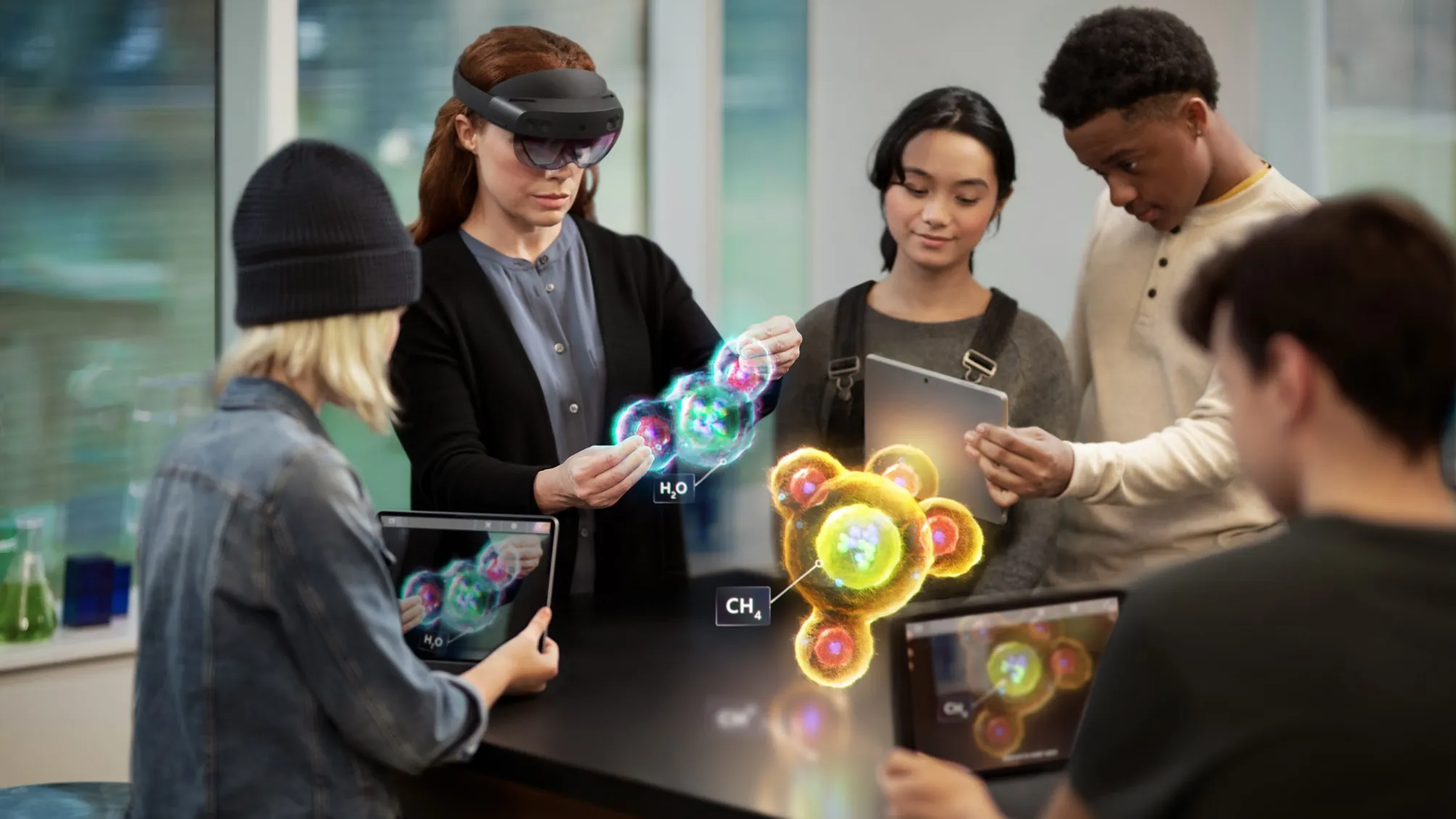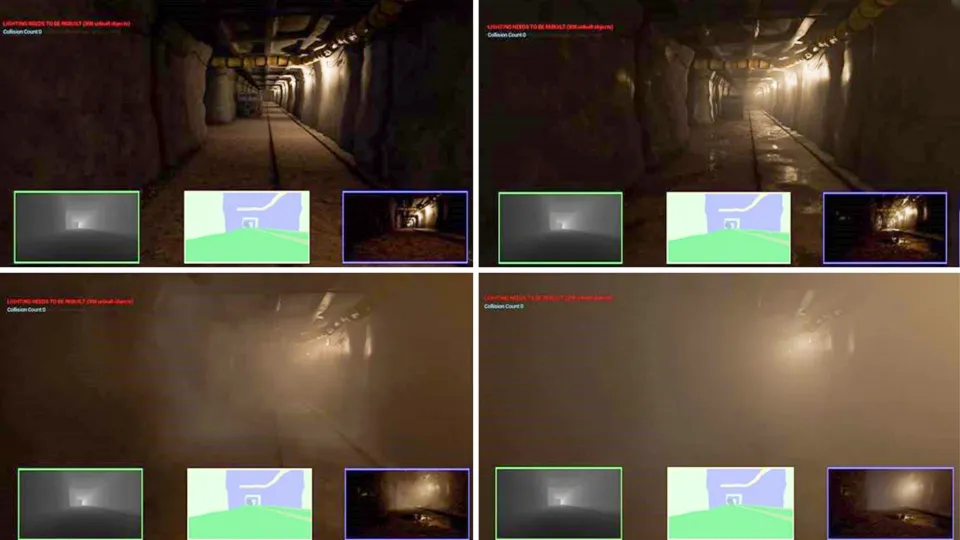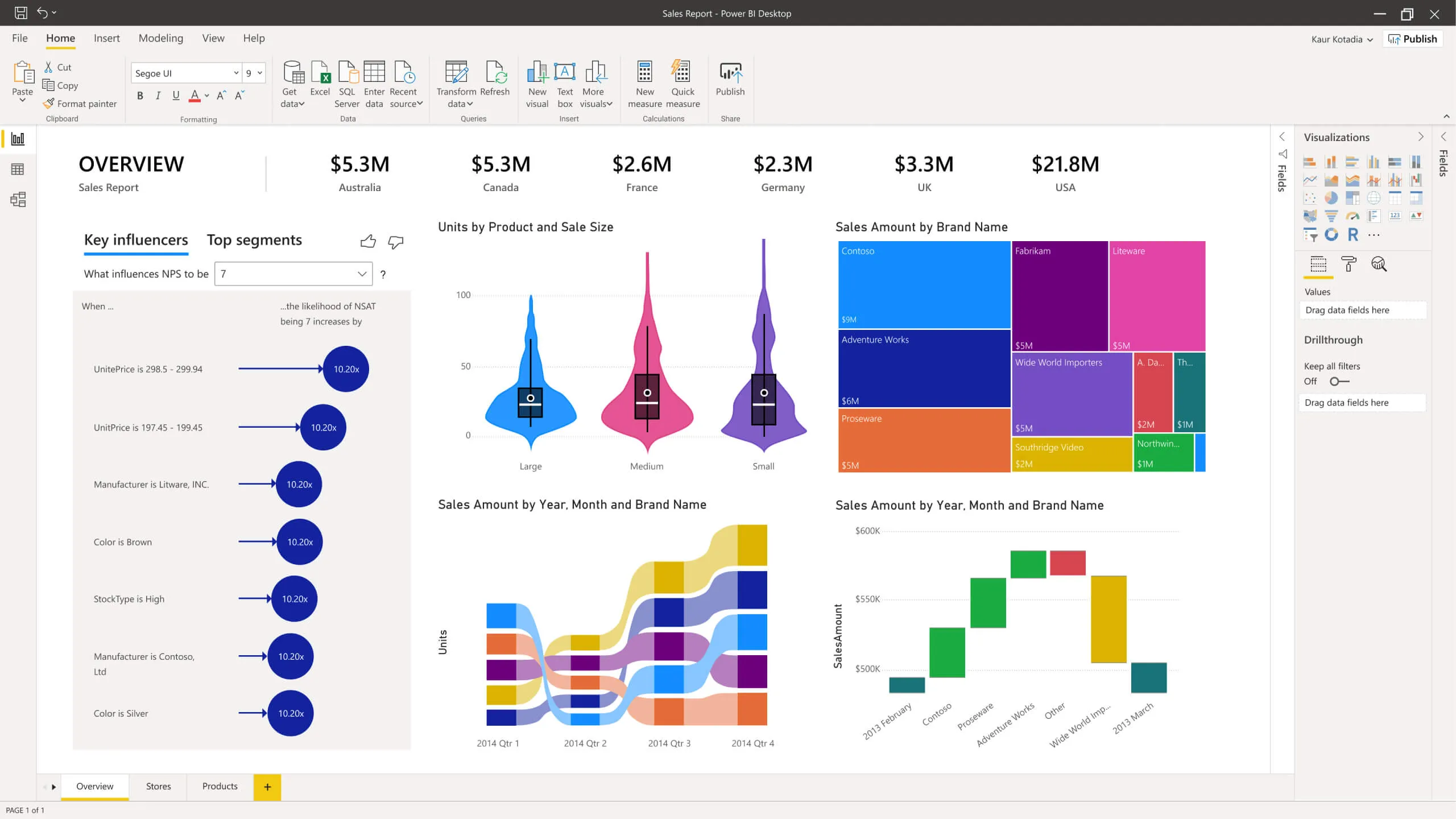What's next? That's what our R&I Team is always thinking. In this post they'll share with you the technology trends they believe will have the biggest impact on the way the world does business in the new year.
Happy New Year from Valorem Reply's Research & Incubation team! A new year is always an exciting time, a look back at how far we’ve come and high hopes for what is yet to come. No, we’re not talking about those washboard abs you’re going to get this year or that stack of cash you’ll save when you finally stick to a budget. We’re talking tech. Transformative, advanced, intelligent tech that will change the way we live! And we couldn’t be more exhilarated about the developments we see coming in 2020. In this post we’ll highlight the Top 5 (emerging) technology trends we’re most excited for and will be keeping an eye on during this year:
- Spatial Computing and the AR Cloud
- IoT and Digital Twins
- Cloud, Security and Quantum Computing
- AI, Data Science and Digital Insights
- Low-code, no-code and Power Apps
Spatial Computing and the AR Cloud
Spatial Computing is an emerging technology that will change how we interact with computers and the world, using intelligent edge devices. Fueled by AI, those devices can spatially sense the world around us. To put it simply, Spatial Computing is an umbrella term for Augmented, Virtual and Mixed Reality (AR/VR/MR), and let’s be honest who wouldn’t be excited for an easy way to summarize that mouth full? We believe Spatial Computing will be the next wave of disruptive technologies that will get it’s foothold in the 2020s, following Mobile & Personal Computing which disrupted work and personal life of us all in the previous decades. Do you even remember a time when you couldn’t check your email on your phone?
 Figure 1: Me enjoying a HoloLens 2 and its flip visor
Figure 1: Me enjoying a HoloLens 2 and its flip visor
The HoloLens 2 was announced early last year at MWC, which we covered in an earlier post. The first production-ready devices shipped at the end of 2019 and roll-out continues in 2020 with a high demand. The HoloLens 2 is by far the most sophisticated Spatial Computing device on the market and will keep that title for the foreseeable future.
As one of the first Microsoft Mixed Reality partners, Valorem Reply has been working with the HoloLens since 2015, using the knowledge gained to help our clients climb to the top of their markets each and every day. We already have our HoloLens 2 devices and like kids on Christmas morning, wasted no time exploring applications for current and future client projects!
2020 will also be the year we see the first lightweight AR glasses with more appealing designs and capabilities beyond that of the typical lightweight Heads-Up-Displays (HUD) we have had for years. These new smart glasses, while still inferior to the HoloLens 2 in terms of features, are already providing 3D stereo optics and other Spatial Computing features like environmental understanding and 6DoF tracking. Companies like Nreal and 0glasses are working on products now and could ship the first real smart glasses to prosumers this year. Smart glasses will still connect to an external computing unit with a cable to run the processing. However, later in the 2020s, we will see mass adoption of Spatial Computing devices in even smaller form, with more features and self-contained; or at least be fully wireless. Even AR contact lenses seem not to be just science-fiction anymore.
 Figure 2: Panasonic lightweight VR goggles
Figure 2: Panasonic lightweight VR goggles
The VR angle of Spatial Computing is also exciting. Tethered devices like the Varjo VR-2 for professional use cases and the Pimax 8k for consumers are claiming a wider field-of-view (FoV) with human-eye resolution display to avoid the screen-door effect. Untethered VR devices that don’t need a PC for the computing, are also gaining new grounds. The Oculus Quest that launched in 2019 is a big commercial success with new feature updates like hand tracking, happening all the time with a business edition now available. The Pico Neo 2 is another player for high-end, standalone VR that is targeting the enterprise market, even providing built-in eye-tracking.
Like AR glasses we will also see fresh takes on the design for VR devices. For example, Panasonic unveiled a new device at CES which has a fun design and seems to have compelling HDR displays that even impressed the founder of Oculus.
While Head Mounted Devices (HMDs) are expected to make significant improvements, naked-eye holographic displays are showing promising progress. There are different approaches being researched and developed with laser light or even acoustic traps that basically shine light on a fast-moving particle. Also big players like Sony are looking into volumetric light field displays, revealing their first prototypes at CES. The holographic display best positioned for real-world use in the near future is Looking Glass, who just launched an 8k version of their volumetric display. The Valorem Reply Immersive Team has been developing for the Looking Glass display since early last year and even got our HoloBeam Immersive Telepresence solution running on it. Combined with the Azure Kinect 3D depth sensing camera for capturing, we have built the next generation of volumetric video streaming!
 Figure 3: AR Cloud collaboration and cross-platform sharing use case
Figure 3: AR Cloud collaboration and cross-platform sharing use case
The AR Cloud will gain even more momentum this year. Gartner added it to their Emerging Tech Hype Cycle describing it as a “transformational technology”. The AR Cloud, sometimes called Magicverse, Mirrorworld, Live Maps or Cloud Anchors, is essentially a Digital Twin of our world. A digital content layer that is persisted and mapped to real objects and locations in the physical world. This allows virtual content to be shared cross-platform between devices and over time. Combined with 5G mobile networks, this technology will be key for Spatial Computing adoption.
Lots of startups are working in this field along with the larger tech companies like Google, Facebook and Microsoft. Azure Spatial Anchors is furthest ahead, providing cross-platform support and true persistence. We have been working with Azure Spatial Anchors since it’s early preview to develop custom solutions for our customers. Paris Morgan from the Microsoft Azure Spatial Anchors team and I even gave a talk at Microsoft’s Build developer conference. The talk was recorded and provides a good intro to the technology with lots of practical uses cases and scenarios.
We are excited to release even more Spatial Computing and AR Cloud material this year and already plan to share our findings at a few conferences. Keep an eye on our Valorem social pages for details. Already have a Spatial Computing project in mind? We would love to hear about it!
IoT and Digital Twins
Although the Internet of Things (IoT) has been around for a little while, it’s gaining rapid momentum and we expect even more growth in 2020. Combined with digital representations of physical assets (Digital Twins fueled by edge devices), IoT promises high value and cost savings for organizations. It’s no wonder market research company Gartner includes Digital Twins in their Top 10 of strategic technologies. Microsoft has already begun deeply investing in Digital Twins and IoT services with their $5bn investments in IoT over a 3 year range.
Digital Twins with intelligent edge scenarios have tremendous potential when combined with Spatial Computing devices like the Microsoft HoloLens. Valorem Reply partnered with the Microsoft Technology Centers (MTCs) to tell that story with an innovative IoT Digital Twin experience. You can learn more here and even sign-up to experience it yourself!
Justin Jackson, Partner & President at Valorem Reply, also gave a 20 min talk at Microsoft Ignite about IoT, Digital Twins and AI. It provides a great intro to the topics. Watch his session here.
Cloud, Security and Quantum Computing
Cloud computing has come a long way during the last 10 years and while Microsoft’s Azure was not the first in the market they have grown at an incredible rate and will continue to do so in 2020. Goldman Sachs just recently conducted a survey of technology executives at large companies showing that Microsoft remained the most popular supplier of public cloud services.
"The latest survey showed that 56 executives are using Azure for cloud infrastructure, versus 48 using AWS. Across cloud infrastructure and platform as a service put together, Microsoft’s lead which has been increasing since December 2017, according to the analysts."
Besides the obvious benefits of cloud computing, sustainability and resource saving is another plus during our times and age. Cloud data centers need to be as energy efficient as possible and leverage available resources as best as they can. While an on-premise server might be idling and wasting energy quite often, a cloud data center server is basically never idling. A good architecture like serverless with Azure Functions will ensure great efficiency . Many large data centers are also built in regions where renewable energy is being leveraged which further reduces the environmental footprint. This article goes a bit more into the details if you are interested.
Microsoft also just launched their initiative to be carbon negative by 2030. The cloud and the right data will be key here, therefore a new tool was launched called the Microsoft Sustainability Calculator, a Power BI app that provides insights into carbon emissions associated with Azure services.
With the ever-increasing challenges from cyber-attacks, security needs to be a first-class citizen and not just an afterthought. Lots of ransomware attacks made the news in 2019 and already in 2020 which is just the tip of the iceberg as most affected companies don’t go public about an incident. While it’s important to think about the security of the infrastructure, it’s equivalently important to have a backup / restore strategy that works in case of ransomware taking your systems hostage via encryption.
Moving to the cloud provides another big benefit here as the cloud providers have dedicated security teams that ensure their systems are as secure as possible. A task that is hard to accomplish with a self-hosted, on-premise solution. And of course, the backup strategy is also well taken care of with cloud storage that can be restored.
Concerned about your organizational security or contingency plan? Valorem Reply can help. Our security experts can help you identify gaps putting you at risk and create a plan to not only mitigate risk, but minimize loss should you become the victim of an attack.
 Figure 4: Cryo-CMOS Technology. Image on left courtesy of The University of Sydney, Louise M. Cooper.
Figure 4: Cryo-CMOS Technology. Image on left courtesy of The University of Sydney, Louise M. Cooper.
While crypto currencies like Bitcoin and others are still volatile investments and are facing scaling challenges, we will see more Blockchain-based applications in 2020. Blockchain as a Service (BaaS) with offerings like Azure Blockchain are trying to solve these challenges and provide unique value adds.
Quantum computing is without a doubt a topic to keep an eye on as it will be the most disruptive technology in computing. While I don’t expect true Quantum supremacy in 2020 and production-ready deployments with a critical number of Qubits, we might see more Quantum as a Service (QaaS) cloud offerings like Azure Quantum. These services are already providing improvements for certain computational tasks, even in the current infancy of the technology.
Quantum computing still needs a lot of research and might not even be full production-ready with a large amount of Qubits in the 2020s but I’m sure we will see more breakthrough this year as many universities and big tech players are chasing for the next generation of computing as classic computers reach the end of what’s physically possible. Quantum computing is also a threat for (internet) security as we know it, which is mainly based on prime factorization encryption. Fortunately there’s also good research for post-quantum cryptography and in fact Quantum cryptography itself has promising upsides.
AI, Data Science and Digital Insights
Artificial Intelligence (AI) and Machine Learning with Deep Neural Networks (DNN) is already fueling many devices and applications we use daily. The core concepts are not new and have been around for decades, but humanity finally has the computing power and the big (training) data available. Combined with open source and open science where scientists and tech companies openly share their research, the progress has been amazing during the last couple of years.
 Figure 5: AirSim simulation for subterranean first responders showing different conditions such as water vapor, dust and smoke.
Figure 5: AirSim simulation for subterranean first responders showing different conditions such as water vapor, dust and smoke.
Many Machine Learning models these days are based on supervised learning. Meaning it requires lots of training data, typically manually labeled, which is a time-consuming effort. Therefore, a big trend continuing in 2020 is synthesized training data that creates training data using various methods like simulations. Microsoft’s AirSim is a great example of where photo-realistic rendering is being leveraged to create training data for autonomous vehicles and situations where it’s basically impossible to have enough training data for subterranean environments like mines. With our in-house 3D and AI teams, we are also exploring the possibilities for automatic generation of Deep Learning vision training data.
Another simulation method that is moving forward at a fast pace is Reinforcement Learning (RL). This uses a different approach than supervised Machine Learning methods by leveraging software agents that take actions in an environment to maximize a reward function.
Many of these AI models that require cloud computing power, are moving to Intelligent Edge deployments for shorter latency. Especially when it comes to computer vision models that take large data streams like images or videos as input. In 2020 we will see the Intelligent Edge and Intelligent Cloud trend continuing using the best of both worlds where the power and scalability of the cloud is used during training and the short latency of the edge is used during model inference.
With all this incredible progress, we also see some negative sides of AI arising that can lead to bad consequences with Deep Fakes and Neural Voice Synthesis. Fortunately there’s also great research to counteract and detect Deep Fakes and alike, for example with FaceForensics++ and other projects. Also many large tech companies and faculties are making Responsible and Ethical AI usage a top priority and are establishing AI principles.
The appliance of AI/ML within applications is touted as the future of application development. This trend of utilizing and incorporating AI into apps and services has been making significant impact across industries. IApps (Intelligent Apps) leverage the power of AI, big data, analytics and cognitive computing to make smart decisions in real-time and create highly personalized customer experiences, from virtual assistants to enterprise applications.
We see this trend of AI-fueled apps quite often when working with customers and there’s little question that the most reliable and useful apps of the future will be IApps empowering their users.
In the enterprise business world, it’s not always about the latest and greatest Deep Learning computer vision model when it comes to AI. Classic Machine Learning is providing high ROI already. We see this a lot in the Data Science projects our Digital Insights team run here at Valorem Reply.
Are you ready for AI and ML? Valorem Reply’s Digital Insights team can help you reach your data goals no matter where you are on the journey to modern data analytics and AI.
Low-code, no-code and Power Apps
The ever-increasing demand for software will just continue and the lack of skilled workforce to develop the software won’t stop anytime soon, therefore another trend we will see continuing in 2020 are applications that anyone can build with low or even no-code at all.
 Figure 6: Microsoft Power BI
Figure 6: Microsoft Power BI
Microsoft again is investing heavily into the field of citizen developers and citizen data scientists and has compelling offerings within its Business Application Platform. Power Apps allows users to easily create custom apps and the Power Platform even allows the creation of AI-fueled chatbot virtual agents and automation tools. All without writing any code. If you know a little bit of coding, Azure Logic Apps might be another powerful tool. I recently created a Logic App that fetches timetables and delays from the proprietary railway service API and sends me an email if a train we use often is above a certain delay threshold.
Power BI is another very powerful tool providing data-driven insights. Valorem Reply’s business intelligence team is made up of Power BI experts and we regularly provide training events, like Dashboard in a Day (DIAD) workshops, in collaboration with Microsoft. You can find and sign-up for one of our free events here or even request a private DIAD workshop for just your team here.
Based on market research and industry knowledge, I think these 5 tech trends will make big waves in the new year. However, no matter what the future brings, I think we can all agree that the year 2020 is off to a great start and it looks like another exciting year for our industry and Valorem Reply. We can’t wait to hear what you want to achieve and how we can assist.
Ready to kick start your 2020 digital initiatives? Valorem Reply can help you reach them quickly and efficiently. Reach out to us as marketing@valorem.com to schedule time with one of our industry experts.







